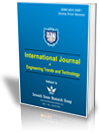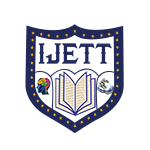Enhancing Service Levels in a Peruvian Beverage SME: An Innovative Model Integrating Machine Learning and 5S Methodology
Enhancing Service Levels in a Peruvian Beverage SME: An Innovative Model Integrating Machine Learning and 5S Methodology |
||
 |
 |
|
| © 2025 by IJETT Journal | ||
| Volume-73 Issue-3 |
||
| Year of Publication : 2025 | ||
| Author : Gabriela Loyola-Ferrer, Wiebke Fernanda Veldi-Díaz, Juan Carlos Quiroz-Flores |
||
| DOI : 10.14445/22315381/IJETT-V73I3P140 | ||
How to Cite?
Gabriela Loyola-Ferrer, Wiebke Fernanda Veldi-Díaz, Juan Carlos Quiroz-Flores, "Enhancing Service Levels in a Peruvian Beverage SME: An Innovative Model Integrating Machine Learning and 5S Methodology," International Journal of Engineering Trends and Technology, vol. 73, no. 3, pp. 561-580, 2025. Crossref, https://doi.org/10.14445/22315381/IJETT-V73I3P140
Abstract
In Peru, the food and beverage services sector shows constant annual growth and a demand experiencing significant monthly variations. However, SMEs in this sector face recurring problems due to their low levels of preparedness, making demand fluctuations a latent threat. Food and beverage service SMEs suffer from inadequate inventory management, inaccurate supply planning and a lack of process optimization, which leads to a low level of On Time in Full (OTIF) deliveries. This is detrimental to an SME, as customer satisfaction is crucial in this sector. Due to this, the present study proposes an innovative Lean Management model that integrates 5S tools and Machine Learning to increase OTIF in a Peruvian beverage service SME. The research focuses on the Milk Tea and Smoothie product lines, which exhibited stockouts and high preparation and stock review times through analysis and diagnosis. The proposed model results in a reduction of 75.98% in the total cycle time of an order. Additionally, the implementation of Machine Learning helped reduce stockouts by providing a more accurate supply forecast, improving forecast error by 19.72% and 38.71% for tapioca and milk, respectively. These indicators led to a 51.42% increase in OTIF. Thus, this management model effectively innovates by adapting tools often used for manufacturing and production to the services sector, thereby achieving outstanding results in both efficiency and customer satisfaction.
Keywords
Machine learning, Lean management, Beverage industry, Inventory management, Enterprise resource planning.
References
[1] Monthly Survey Bulletins for the Service Sector, National Institute of Statistics and Informatics, 2024. [Online]. Available: https://m.inei.gob.pe/biblioteca-virtual/boletines/encuesta-mensual-del-sector-servicios-8536/2024/1/#lista/.
[2] Inderpreet Singh Ahuja, and Harwinder Singh, “Evaluating the Effectiveness of 5S Implementation Practices in Indian Manufacturing Industry,” International Journal of Productivity and Quality Management, vol. 25, no. 4, pp. 506-555, 2018.
[CrossRef] [Google Scholar] [Publisher Link]
[3] Euromonitor International, Consumer Foodservice in Peru, Passport, 2023. [Online]. Available: https://www.euromonitor.com/consumer-foodservice-in-peru/report#.
[4] Keysi Alexandra Carbajal-Vásquez et al., “Minimization of Smashed Products in Sustenance Industries by Lean and Machine Learning Tools,” SSRG International Journal of Mechanical Engineering, vol. 10, no. 10, pp. 12-26, 2023.
[CrossRef] [Google Scholar] [Publisher Link]
[5] Jenny Gutiérrez López, Álvaro Freile, and Sofía López Iglesias, “Reduction in Picking Times Orders for Delivery in A National Distribution Centre: A Case Study,” Industry, Innovation, and Infrastructure for Sustainable Cities and Communities: Proceedings of the 17th LACCEI International Multi-Conference for Engineering, Education and Technology, Montego Bay, Jamaica, pp. 1-7, 2019.
[Publisher Link]
[6] Federico Alejandro ARANGO Vásquez, and Miguel David ROJAS López, “A Critical Review of Lean Service,” Spaces Magazine, vol. 39, no. 7, pp. 9, 2018.
[Publisher Link]
[7] Bertha Liza Ludeña, Gianella Paulino Fierro, and Ernesto Altamirano Flores, “Design of a Lean Manufacturing Model to Reduce Order Delivery in a Textile Mype,” Proceedings of the 2nd LACCEI International MultiConference on Entrepreneurship, Innovation and Regional Development, pp. 1-9, 2022.
[CrossRef] [Publisher Link]
[8] Mariapaula Briceno-Pinheiro, Nicolas Enrique Torrico-Menacho, and Alberto Flores-Perez, “Service Management Model Based on Standardization, SLP and 5S to Improve the NPS in SMEs in the Service Sector,” ICIEAEU '23: Proceedings of the 2023 10th International Conference on Industrial Engineering and Applications, pp. 41-46, 2023.
[CrossRef] [Google Scholar] [Publisher Link]
[9] Bartłomiej Gładysz, Aleksander Buczacki, and Cecilia Haskins, “Lean Management Approach to Reduce Waste in Horeca Food Services”. Resources, vol 9, no. 12, pp. 1-20, 2020.
[CrossRef] [Google Scholar] [Publisher Link]
[10] Hisahiro Ishijima et al., “Introducing the “5S-KAIZEN-TQM” Approach into Public Hospitals in Egypt,” International Journal of Health Care Quality Assurance, vol. 33, no. 1, pp. 89-109, 2019.
[CrossRef] [Google Scholar] [Publisher Link]
[11] Miguel Rodrigues et al., “Machine Learning Models for Short-Term Demand Forecasting in Food Catering Services: A Solution to Reduce Food Waste,” Journal of Cleaner Production, vol. 435, pp. 1-16, 2024.
[CrossRef] [Google Scholar] [Publisher Link]
[12] Chafak Tarmanin et al., “Short Term Load Forecasting Based on ARIMA and ANN Approaches,” 2022 3rd International Conference on Power, Energy and Electrical Engineering (PEEE 2022), vol. 9, pp. 550-557, 2023.
[CrossRef] [Google Scholar] [Publisher Link]
[13] Muhaimin Hasanudin et al., “E-SCM Based on Material Inventory Management Uses the Material Requirements Planning Method”. Journal of Physics: Conference Series, Engineering and Technology, vol. 1477, pp. 1-8, 2020.
[CrossRef] [Google Scholar] [Publisher Link]
[14] L. Durand-Sotelo et al., “Lean Production Management Model Under the Change Management Approach to Reduce Order Fulfillment Times for Peruvian Textile SMEs,” IOP Conference Series: Materials Science and Engineering, The 9th AIC 2019 on Sciences & Engineering (9thAIC-SE), Indonesia, vol. 796, no. 1, pp. 2-8, 2020.
[CrossRef] [Google Scholar] [Publisher Link]
[15] Nicole Yarixa Espinoza Sanchez et al., “Implementation of Lean and Logistics Principles to Reduce Non-conformities of a Warehouse in the Metalworking Industry,” 2021 10th International Conference on Industrial Technology and Management (ICITM), pp. 89-93, 2021.
[CrossRef] [Google Scholar] [Publisher Link]
[16] Cubas Rodríguez, Julio Cesar et al., “Implementation of Lean Manufacturing Tools to the Kid’s Footwear Company,” 20th LACCEI International Multi-Conference for Engineering, Education, and Technology, Florida, USA, pp. 18-22, 2022.
[CrossRef] [Google Scholar] [Publisher Link]
[17] M.M. Shahriar, et al., “Implementation of 5S in A Plastic Bag Manufacturing Industry: A Case Study,” Cleaner Engineering and Technology, USA, vol. 8, pp. 1-13, 2022.
[CrossRef] [Google Scholar] [Publisher Link]
[18] Eleonora Bottani, Andrea Volpi, and Roberto Montanari, “Design and Optimization of Order Picking Systems: An Integrated Procedure and Two Case Studies,” Computers and Industrial Engineering, vol. 137, 2019.
[CrossRef] [Google Scholar] [Publisher Link]
[19] John Zvidzayi, “Reducing Manufacturing Barriers by Introducing a 5S Hybrid Management System in SA Industries,” Proceedings of the 4th European International Conference on Industrial Engineering and Operations Management, pp. 2037-2046, 2021.
[CrossRef] [Google Scholar] [Publisher Link]
[20] Thania Baldeon-Lazaro et al., Production Model to Improve the Efficiency of a Peruvian Cotton Knitwear Export Company Using 5S, Standardization of Operations and Autonomous Maintenance, Human Interaction, Emerging Technologies and Future Applications III, Springer, Cham, pp. 506-512, 2020.
[CrossRef] [Google Scholar] [Publisher Link]
[21] Panchana Cabrera, and Arianna Melisa, “Application of the 5S methodology in line number # 1 of classification and packaging of a shrimp packing company located in Duran,” Journal of Asia Pacific Studies, vol. 5, no. 3, pp. 598- 610, 2019.
[Google Scholar] [Publisher Link]
[22] Edith Leon-Enrique et al., “Improvement Model Applying SLP and 5S to Increase Productivity of Storaging Process in a SME Automotive Sector in Peru.,” IEIM 2022: 2022 The 3rd International Conference on Industrial Engineering and Industrial Management, pp. 219–225, 2022.
[CrossRef] [Google Scholar] [Publisher Link]
[23] Elmer Alfonso Gil-Goyzueta, Fiorella Yasmin Medrano-Cordova, and Ernesto Altamirano-Flores, “Process Improvement Proposal Storage to Increase the Service Level Using Lean Warehousing in Commerce Companies,” ICIBE '22: Proceedings of the 8th International Conference on Industrial and Business Engineering, pp. 195-203, 2022.
[CrossRef] [Google Scholar] [Publisher Link]
[24] Dušan Gošnik, and Igor Stubelj, “Business Process Management and Risk-Adjusted Performance in SMEs,” Kybernetes, vol. 51, no. 2, pp. 659-675, 2022.
[CrossRef] [Google Scholar] [Publisher Link]
[25] Svetlana Nikolicic et al., “Reducing Food Waste in the Retail Supply Chains by Improving Efficiency of Logistics Operations,” Sustainability, vol. 13, no. 12, pp. 1-24, 2021.
[CrossRef] [Google Scholar] [Publisher Link]
[26] Madiyar Sultanbek et al., “Forecasting the Demand for Railway Freight Transportation in Kazakhstan: A Case Study,” Transportation Research Interdisciplinary Perspectives, vol. 23, pp. 1-9, 2024.
[CrossRef] [Google Scholar] [Publisher Link]
[27] Esperanza Manrique Rojas, “Machine Learning: Analysis of Programming Languages and Development Tools,” Iberian Journal of Information Systems and Technologies, no. E28, pp. 586-599, 2020.
[Google Scholar] [Publisher Link]
[28] Xin Tian, and Haoqing Wang, “Impact of IT Capability on Inventory Management: An Empirical Study,” Procedia Computer Science, vol. 199, pp. 142-148, 2022.
[CrossRef] [Google Scholar] [Publisher Link]
[29] Krzysztof Lutoslawski et al., “Food Demand Prediction Using the Nonlinear Autoregressive Exogenous Neural Network,” IEEE Access, vol. 9, pp. 146123-146136, 2021.
[CrossRef] [Google Scholar] [Publisher Link]
[30] Mogrovejo Román, and Patricia Mariley, “Proposal for the Implementation of a Quality Management System Based on the ISO 9001:2015 Standard in a Women's Leather Footwear Manufacturing Company Located in Metropolitan Lima,” Pontifical Catholic University of Peru, 2018.
[Publisher Link]

